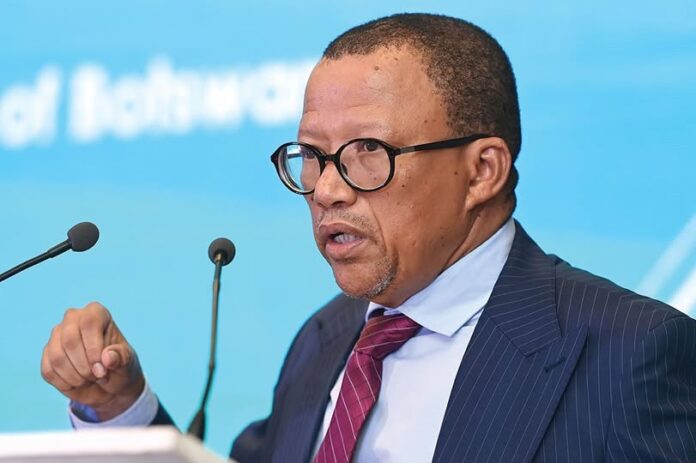17 April 2025
Own Correspondent
The Bank of Botswana Governor Cornelius K Dekop has revealed that the Monetary Policy Committee has maintained the Monetary Policy Rate maintained at 1.9 percent.
He also indicated that the revised import tariff rate for exports to United States of America(USA) set at 37 percent, which has been put on hold for 90 days, would if implemented adversely impact on Botswana’s exports which account for a significant amount of Botswana revenue earnings.
“We expect that the forthcoming April 2025 World Economic Outlook (WEO) publication by the International Monetary Fund (IMF) will provide comprehensive analysis of the likely trajectory of the global economy in this environment. Relatedly, recent developments have led to a significant drop in international oil prices, which, if sustained, could result in lower domestic inflation,” said Dekop.
He said, “The domestic economy faces challenges relating to inadequate traction of transformation policy initiatives, thus lack of economic diversification and weakening fiscal and external position. The recent credit rating reviews by Moody’s and S&P Global Ratings also allude to these factors. Hence, the need for all policy frameworks to be aligned towards building economic resilience.”
Dekop shared that these challenges existed around current fiscal policy in terms of enhanced resource mobilization, rationalization of expenditure and rebuilding fiscal and external buffers that enable continued policy discretion not influenced by any need for external support.
According to officials the Botswana economy was in a recession in 2024 but was projected to improve. However, there is possibility that this recovery may be muted. Indeed, the challenges faced now and those ahead require effective design and implementation of sound policies and achievement of high levels of productivity across all our initiatives and efforts to grow the economy.
As reported by Statistics Botswana recently, the economy was in a recession in 2024, with real gross domestic product (GDP) contracting by 3 percent, compared to a growth of 3.2 percent in 2023.
The 2024 performance was mainly due to the contraction in the mining sector and generally subdued growth in the non-mining sectors.
According to the January 2025 IMF WEO Update, global output is estimated to have expanded by 3.2 percent in 2024 and is forecast to grow by 3.3 percent in 2025 and 2026. The continuing geoeconomic fragmentation and restrictive trade policies have led to heightened economic uncertainty, which may undermine the anticipated global economic growth.
Projections at the time of the 2025 Budget Speech indicated that the economy would recover in 2025, growing by 3.3 percent. This projection was premised on the anticipated recovery in diamond sector.
As earlier indicated, recovery could be muted due to the ongoing global developments, which include growing competition from other luxury goods and economic challenges in key markets, are undermining the recovery in the diamond market.
As reported by Statistics Botswana, headline inflation increased from 2.7 percent in February 2025 to 2.8 percent in March 2025, but still remaining below the lower bound of the medium-term objective range of 3 – 6 percent. The increase in inflation was mainly due to increases in food and motor vehicle prices. The MPC forecasts inflation to remain low into the medium term, averaging 2.5 percent in
2025 and 4.9 percent in 2026. However, the risks to the inflation outlook are assessed to be balanced.
The MPC observes that inflation could be higher than projected if international commodity prices were to increase above current forecasts, and supply and logistical constraints in the global value chains were to persist. Reciprocal tariffs could also be inflationary.
Inflation could be lower than projected due to subdued domestic and global economic activity, limited fiscal space and the potential fall in international oil prices beyond current forecasts. The inflation outcomes could also be affected by possible changes in administered prices that are not factored in the current projection.
“The economy is expected to operate below full capacity in the short term, though improving slightly into the medium term. This should not generate demand-driven inflationary pressures. Thus, inflation is forecast to remain within the objective range in the medium term,” said Dekop.
Similarly, businesses expect inflation to be within the medium-term objective range, suggesting that inflation expectations are well anchored.









